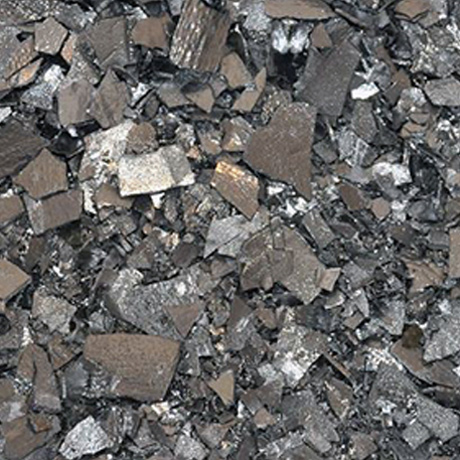Chromium
Basic facts about Chromium:
Chromium (Cr) is a hard, silvery metal with a blue tinge. It is the 21st most common element found in the Earth's crust, but is not found in its free metal form. Instead, it is principally found in chromite ore. Chromium metal is then obtained by heating the chromite ore in the presence of aluminium or silicon. It originally earned it its name from the Greek word Chroma which means "colour."
Chromium is a transition metal in Group 6 on the Periodic Table of Elements. In its pure form, chromium is a silvery, lustrous, hard metal that has a high polish, ideal for electroplating. Chromium is used to coat cars, stoves and other appliances to protect them from corrosion and to improve their looks. Chromium's high melting point and stable structure also make it useful in the textile and refractory industries. When combined with other elements, chromium makes vibrant colours and is used as a dye. Chromium compounds are all vividly coloured and are used as pigments — bright green, yellow, red and orange. Rubies are red because of chromium, and glass treated with chromium has an emerald green colour. It is naturally found in compounds in the earth's crust. However, consuming high levels of chromium in polluted drinking water or inhaling fumes of the heated element can cause ulcers, cancer and other health problems.
The most important chromium compounds are the chromates of sodium and potassium, the dichromate, and potassium and ammonium chrome alums. Chromium compounds are toxic and should be handled with care.
More about Chromium:
Chromium is a very hard metal that can take a high mirror polish. It is also odourless, tasteless, and malleable.
The metal forms a thin protective oxide coating in air. It burns when heated to form green chromium oxide Cr2O3.
Chromium is a mineral. It is called an "essential trace element" because very small amounts of chromium are necessary for human health. There are two forms of chromium: trivalent chromium and hexavalent chromium. The first is found in foods and supplements and is safe for humans. The second is a known toxin that can cause skin problems and lung cancer.
USES OF CHROMIUM
- Chromium is used to harden steel, to manufacture stainless steel as it won't rust and to produce several alloys.
- Chromium plating can be used to give a polished mirror finish to steel.
- Chromium is used for chromium deficiency. It is also used for diabetes, high cholesterol, a hormonal disorder that causes enlarged ovaries with cysts (polycystic ovary syndrome or PCOS), and many other conditions, but there is no good scientific evidence to support most of these uses.
- The metal is also widely used as a catalyst.
- Chromium compounds are valued as pigments for their vivid green, yellow, red and orange colors.
- Chromium plating, for example on cars and bicycles, produces a smooth, silver finish that is highly resistant to corrosion
Properties of Aluminium
| Atomic symbol | Cr |
|---|---|
| Atomic number | 24 |
| Atomic Mass | 51.996 |
| Density | 7.15 g cm−3 |
| Melting point | 1907°C, 3465°F, 2180 K |
| Boiling point | 2671°C, 4840°F, 2944 K |
| Refractive Index | n = 2.08–2.16 |
| Electron configuration | [Ar] 3d54s1 |
| Key Isotopes | 52Cr |
| Mohs scale hardness | 5.5 |
| Specific Gravity | 4.5–4.8 |
